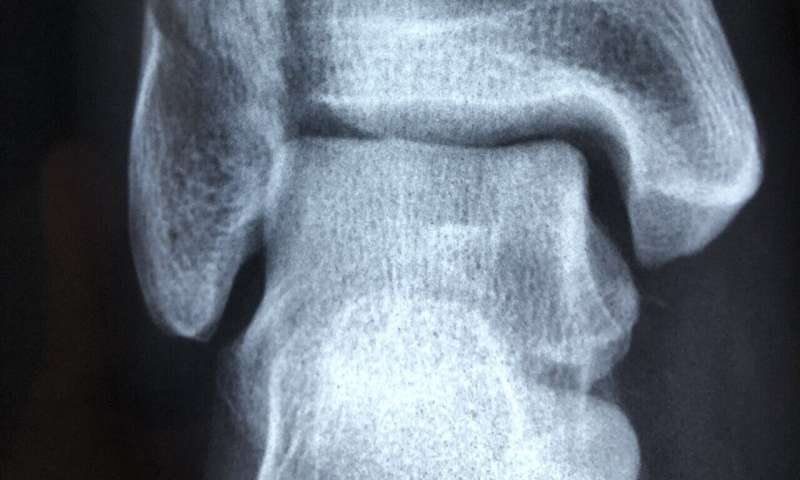Credit: CC0 Public Domain
The COVID-19 pandemic has been shown to have caused a significant strain on the healthcare system and resources in the United States. However, data regarding the impact of the virus on hip fractures, primarily seen in elderly patients, is lacking.
Researchers at Hospital for Special Surgery (HSS) sought to compare characteristics and outcomes of hip fracture patients admitted during the COVID-19 outbreak to patients admitted before the outbreak. They also examined characteristics and outcomes of hip fracture patients with and without the virus. Their findings were presented at the 2021 Spring American Society of Regional Anesthesia and Pain Medicine (ASRA) Annual Meeting.1
"Studying this topic is important because events that stress the healthcare system, like this pandemic, allow us to gain rare insights into what happens to medical care when resources become scarce," said principal investigator Stavros Memtsoudis, MD, Ph.D., MBA, an anesthesiologist at HSS.
Dr. Memtsoudis and colleagues compared patient and healthcare characteristics, COVID-19 diagnoses and outcomes for hip-fracture patients from March to April 2019 and March to April 2020. Observed outcomes included length of hospital stay, admission to an intensive care unit (ICU), use of mechanical ventilation, 30-day readmission, discharge disposition and postoperative complications.
The number of hip fracture cases during the COVID-19 surge decreased by 50% compared with the same time period during the previous year. "One of the major takeaways from this study was we saw that fractures were more commonly treated nonoperatively, and how outcomes differed," Dr. Memtsoudis noted. During the pandemic, hip fracture patients were discharged earlier and were less likely to be admitted to the ICU.
Other factors did not differ before and after COVID-19, including in-hospital mortality rate, 30-day readmission rate, use of mechanical ventilation, and complication rate.
Hip-fracture patients with COVID-19 stayed in the hospital longer, had higher rates of complications during surgery, increased rates of mortality, and more frequently received nonsurgical treatment.
These results show two main considerations for hospitals. As society begins to return to more normal activities, rates of hip fracture are likely to increase back to pre-COVID-19 levels. Hospitals should be prepared and have plans for treating hip fracture patients with COVID-19, as well as protecting non-COVID-19 patients from exposure.
Additionally, findings that demonstrate shorter length of stay in the hospital, less use of the ICU, and earlier home discharge did not compromise outcomes and deserve further study. This raises the question of whether the strategies of care for hip fracture patients used before the pandemic should be adjusted.
"These results should make us reevaluate our practice going forward to make sure we do not waste resources but also affirm interventions that truly are beneficial," Dr. Memtsoudis concluded.
More information: epostersonline.com/ASRASPRING21/node/1052
Provided by Hospital for Special Surgery























